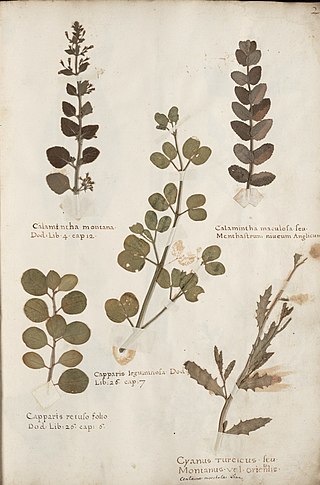
A herbarium is a collection of preserved plant specimens and associated data used for scientific study.

Cattleya is a genus of orchids from Costa Rica south to Argentina. The genus is abbreviated C in trade journals.

Rhizanthella slateri, commonly known as the eastern underground orchid, is a species of flowering plant in the orchid family and is endemic to New South Wales. It is a mycoheterotrophic herb that spends most of its life under the soil surface, its flowers only sometimes appearing a few millimetres about ground level.

Phragmipedium kovachii is an orchid species found to be new to science in 2001, native to the Andean cloud forests of northern Peru. A species with terrestrial habit and growing in clumps of several individuals, it displays showy pink to purple flowers up to 20 cm (8 in) wide. It is currently considered a critically endangered species by the IUCN, due to overcollection in the wild.
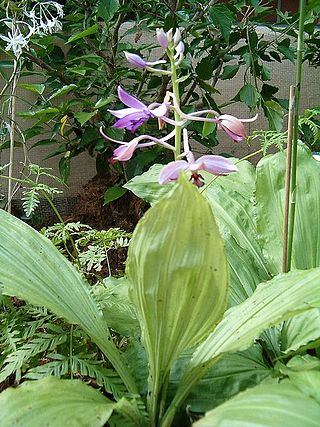
Calanthe, commonly known as Christmas orchids, is a genus of about 220 species of orchids in the family Orchidaceae. They are evergreen or deciduous terrestrial plants with thick roots, small oval pseudobulbs, large corrugated leaves and upright, sometimes arching flowering stems. The sepals and petals are narrow and a similar size to each other and the labellum usually has spreading lobes.

Rhizanthella, commonly known as underground orchids, is a genus of flowering plants in the orchid family, Orchidaceae and is endemic to Australia. All are leafless, living underground in symbiosis with mycorrhizal fungi. The inflorescence is a head of flowers held at, or just above the ground but mostly covered by soil or leaf litter and little is known about the mechanism of pollination.

Gastrodia, commonly known as potato orchids, is a genus of terrestrial leafless orchids in the family Orchidaceae, about ninety of which have been described. Orchids in this genus have fleshy, upright stems and small to medium-sized resupinate flowers with narrow sepals and petals. They are native to Asia, Australia, New Zealand, central Africa, and various islands of the Indian and Pacific Oceans.
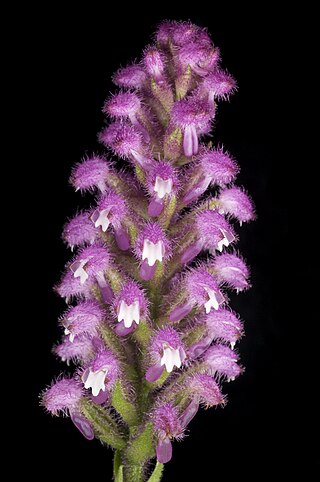
Cynorkis is a genus of orchids in the subtribe Orchidinae. Species in this genus are native to mainland Africa, the Comoro Islands, the Mascarene Islands, and Madagascar.

Phaius tankervilleae, commonly known as the greater swamp-orchid, swamp lily, swamp orchid, nun's-hood orchid, nun's orchid, veiled orchid, Lady Tankerville's swamp orchid or 鹤顶兰 , is a species of orchid native to areas from Asia to islands in the Pacific Ocean. It has large, pleated leaves and tall flowering stems bearing up to twenty five white, brown, mauve and yellow flowers. It was named for Lady Tankerville who was the first person to make the orchid flower successfully in England. It was the first tropical orchid to flower in England.
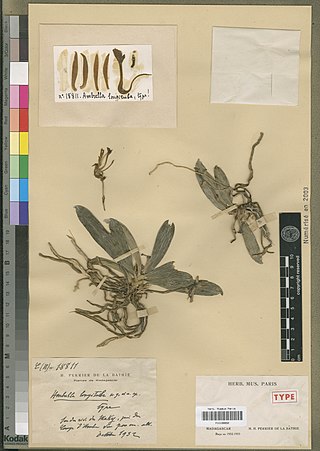
Ambrella is a monotypic genus in the orchid family. The single species, Ambrella longituba is endemic to Madagascar. The type specimen was collected and described by Joseph Marie Henry Alfred Perrier de la Bâthie in 1934.
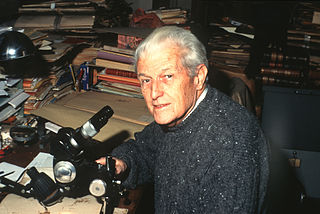
Jean Marie Bosser, sometimes listed as Jean-Michel Bosser was a French botanist and agricultural engineer who worked extensively in Madagascar and Mauritius.

The flora of Madagascar consists of more than 12,000 species of plants, as well as a poorly known number of fungi and algae. Around 83% of Madagascar's vascular plants are found only on the island. These endemics include five plant families, 85% of the over 900 orchid species, around 200 species of palms, and such emblematic species as the traveller's tree, six species of baobab and the Madagascar periwinkle. The high degree of endemism is due to Madagascar's long isolation following its separation from the African and Indian landmasses in the Mesozoic, 150–160 and 84–91 million years ago, respectively. However, few plant lineages remain from the ancient Gondwanan flora; most extant plant groups immigrated via across-ocean dispersal well after continental break-up.

Cynorkis gibbosa is a species of orchid endemic to Madagascar. It may grow as a lithophyte or as a terrestrial plant, and is sometimes cultivated as an ornamental plant.

Malaxis seychellarum is a species of orchid endemic to the Seychelles Islands in the Indian Ocean. First described in 1902, it is now considered a vulnerable species.
Schizolaena isaloensis is a tree in the family Sarcolaenaceae. It is endemic to Madagascar. The specific epithet refers to Isalo National Park, near where the species was identified.
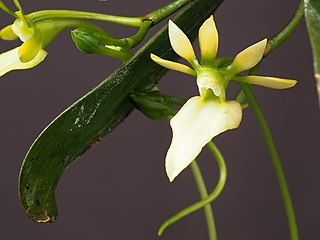
Neobathiea grandidierana is a species of orchid from Madagascar and the Comoros. It is named after the French naturalist Alfred Grandidier, who devoted his life to the study of Madagascar. Among the 6 described species of Neobathiea, this species is the most widely distributed within Madagascar, occurring in Antsiranana, Antananarivo, Fianarantsoa, and Toliara. In the Comoros, it occurs in Anjouan and Grande Comore. The habitat of this species is humid forest on west-faching slopes at the elevation range of 1000-1650m. In nature, the flowering season of this species is spring to early summer.

Bartholina burmanniana, the spider orchid, is a species of deciduous, geophytic, flowering plant in the family Orchidaceae. It is one of two species within the Bartholina genus, the other being B. etheliae. The species’ common name refers to its spreading and deeply cut lip that is said to resemble a spider's legs. It is native to the Eastern and the Western Cape Provinces of South Africa, flowering from the end of August to the middle of October and peaking in September. This is one of the species sometimes referred to as "spider orchid".
Johan Hermans is a British botanist specialising in orchids, and an Honorary Research Associate of Royal Botanic Gardens, Kew. His The Orchids of Madagascar, described as "a now classic work", was published in a second edition in 2007.
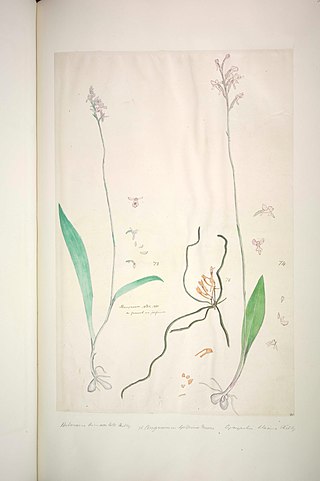
William Deans Cowan was a Scottish naturalist. He was a member of the London Missionary Society who was sent to Madagascar (1874-1881), where he taught Malagasy students at Fianarantsoa. He was an authorities collector of natural history material including lemurs, birds, reptiles, molluscs and insects that were sent to the zoology department of the British Museum under Albert Günther. Much of his plant collection, is also held by that institutions herbarium then under William Carruthers. He also collected insects for John Obadiah Westwood, birds for Alfred Newton and orchids for Henry Nicholas Ridley. He was a Member of the Royal Geographic Society.

















